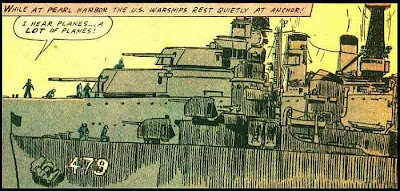Nancy Wake was Australia’s most decorated servicewoman. She worked for the French Resistance and the British Special Operations Executive and was nicknamed ‘white mouse’ by the Gestapo because she was so elusive. She died in London yesterday, August 7th, 2011, aged 98.
Born in New Zealand in 1912, Nancy Wake’s family then moved to Australia and settled in Sydney. She worked for a period as a nurse, but travelled to Europe when she was in her twenties and trained herself as a journalist. Living and working in France, Wake married the wealthy French businessman Henri Fiocca, in 1939.
The couple were living in Marseille at the time of the German invasion and occupation of France and became active in the French resistance. Working initially as a courier and then as a saboteur and spy, Nancy Wake became the Gestapo’s most wanted person, with a 5 million franc price on her head. She was arrested in 1943, but was released four days later and managed to escape over the Pyrenees to Spain and eventually to England. She then worked for the British Special Operations Executive and was parachuted into France in April 1944 to deliver weapons to French resistance fighters before D-Day. She coordinated resistance activity prior to the D-Day landings, helped to recruit new members and carried out attacks on the Gestapo Headquarters in Montluçon in central France.
Her husband, however, was captured, tortured and executed by the Gestapo, in October 1943, for refusing to give her up. She was not aware of his death until the end of the war. She returned to Australia after the war and stood as a Liberal candidate in the 1949 and 1951 Australian federal elections. When she failed to win a seat in the 1951 election, she returned to England and married the ex RAF pilot John Forward in 1957.
Wake was awarded the French Légion d’Honneur and as well as Britain’s George’s Medal in 1945 and the US Medal of Freedom. In 2004, she was made companion of the Order of Australia. Her autobiography The White Mouse was published in 1985.
Talking about her wartime activities, Nancy Wake stated that: ‘Freedom is the only thing worth living for. While I was doing that work, I used to think it didn't matter if I died, because without freedom there was no point in living.’
In a statement issued, today, the Australian Prime Minster Julia Gillard described her as ‘a woman of exceptional courage and resourcefulness whose daring exploits saved the lives of hundreds of Allied personnel and helped bring the Nazi occupation of France to an end.’
She continued: ‘Today our nation honours a truly remarkable individual whose selfless valour and tenacity will never be forgotten. Nancy Wake will remain an abiding inspiration to generations of Australians’.
Nancy Wake is expected to be cremated and her ashes scattered at Montluçon.
Born in New Zealand in 1912, Nancy Wake’s family then moved to Australia and settled in Sydney. She worked for a period as a nurse, but travelled to Europe when she was in her twenties and trained herself as a journalist. Living and working in France, Wake married the wealthy French businessman Henri Fiocca, in 1939.
The couple were living in Marseille at the time of the German invasion and occupation of France and became active in the French resistance. Working initially as a courier and then as a saboteur and spy, Nancy Wake became the Gestapo’s most wanted person, with a 5 million franc price on her head. She was arrested in 1943, but was released four days later and managed to escape over the Pyrenees to Spain and eventually to England. She then worked for the British Special Operations Executive and was parachuted into France in April 1944 to deliver weapons to French resistance fighters before D-Day. She coordinated resistance activity prior to the D-Day landings, helped to recruit new members and carried out attacks on the Gestapo Headquarters in Montluçon in central France.
Her husband, however, was captured, tortured and executed by the Gestapo, in October 1943, for refusing to give her up. She was not aware of his death until the end of the war. She returned to Australia after the war and stood as a Liberal candidate in the 1949 and 1951 Australian federal elections. When she failed to win a seat in the 1951 election, she returned to England and married the ex RAF pilot John Forward in 1957.
Wake was awarded the French Légion d’Honneur and as well as Britain’s George’s Medal in 1945 and the US Medal of Freedom. In 2004, she was made companion of the Order of Australia. Her autobiography The White Mouse was published in 1985.
Talking about her wartime activities, Nancy Wake stated that: ‘Freedom is the only thing worth living for. While I was doing that work, I used to think it didn't matter if I died, because without freedom there was no point in living.’
In a statement issued, today, the Australian Prime Minster Julia Gillard described her as ‘a woman of exceptional courage and resourcefulness whose daring exploits saved the lives of hundreds of Allied personnel and helped bring the Nazi occupation of France to an end.’
She continued: ‘Today our nation honours a truly remarkable individual whose selfless valour and tenacity will never be forgotten. Nancy Wake will remain an abiding inspiration to generations of Australians’.
Nancy Wake is expected to be cremated and her ashes scattered at Montluçon.
























































